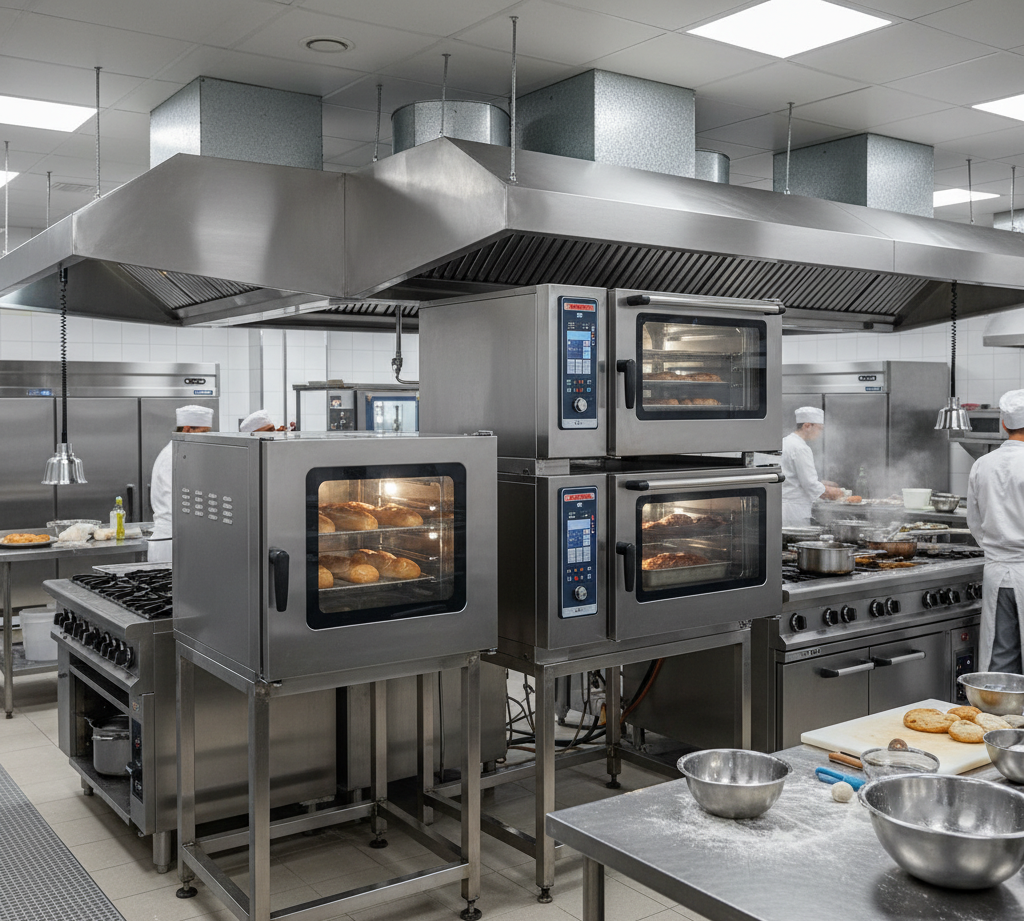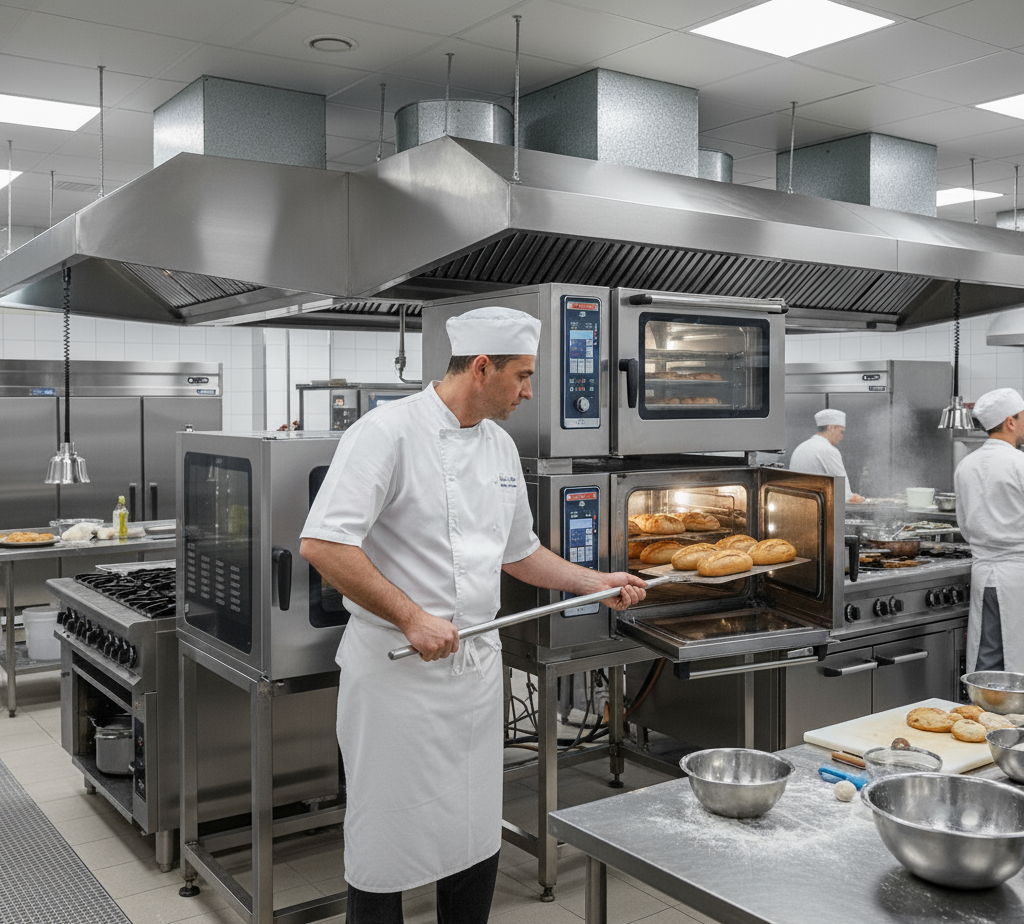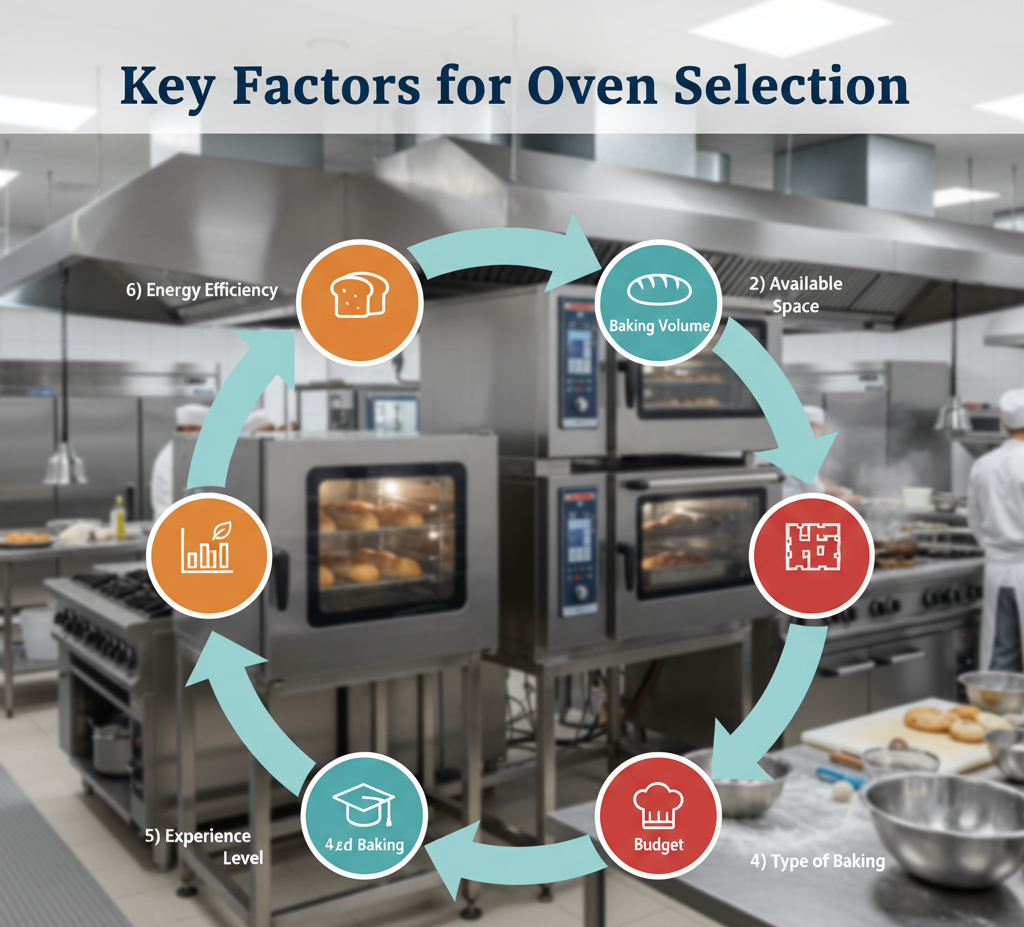Single vs. Double Deck Oven: Which One Should You Buy?

When choosing between a single deck and a double deck oven for your kitchen, whether you’re a home baker or running a small bakery, the decision can significantly impact your baking efficiency, output, and overall experience. Both types of ovens have their advantages and drawbacks, and the right choice depends on your specific needs, space, budget, and baking goals. In this blog, we’ll break down the key differences between single deck and double deck ovens to help you make an informed decision.
What is a Single Deck Oven?
A single deck oven features one baking chamber, designed to handle a single batch of baked goods at a time. These ovens are compact, versatile, and widely used in small bakeries, cafes, or home kitchens. They come in various sizes and can be electric or gas-powered, with features like temperature control, timers, and sometimes steam injection for artisan bread baking.
Pros of Single Deck Ovens
- Compact Size: Single deck ovens take up less space, making them ideal for small kitchens or businesses with limited room.
- Affordable: Generally, they are less expensive than double deck ovens, both in terms of initial cost and energy consumption.
- Ease of Use: With only one chamber to manage, they are simpler to operate, especially for beginners or small-scale bakers.
- Energy Efficiency: Since you’re heating only one chamber, they typically use less energy compared to double deck ovens.
- Flexibility: Suitable for a variety of baked goods, from bread and pastries to pizzas and cakes, depending on the model.
Cons of Single Deck Ovens
- Limited Capacity: You can only bake one batch at a time, which may slow down production if you have high demand.
- Slower Output: If you need to bake multiple items simultaneously, you’ll need to wait for one batch to finish before starting the next.
What is a Double Deck Oven?

A double deck oven has two separate baking chambers stacked vertically, allowing you to bake two batches of goods simultaneously. Each chamber typically has independent temperature and timer controls, giving you flexibility to bake different items at different settings. These ovens are popular in busy bakeries, pizzerias, and restaurants with higher production needs.
Pros of Double Deck Ovens
- Higher Capacity: With two chambers, you can bake twice as much in the same amount of time, making them ideal for high-volume baking.
- Versatility: Independent controls for each deck allow you to bake different items (e.g., bread in one deck, cookies in the other) at different temperatures.
- Time Efficiency: Double deck ovens reduce waiting time between batches, speeding up production for businesses.
- Scalability: Perfect for growing businesses that need to increase output without investing in multiple single deck ovens.
Cons of Double Deck Ovens
- Larger Footprint: They require more space, which may not be practical for small kitchens or home setups.
- Higher Cost: Double deck ovens are more expensive upfront and may have higher operating costs due to increased energy consumption.
- Complexity: Managing two chambers can be more challenging, especially for inexperienced bakers.
- Maintenance: With more components, maintenance and repair costs can be higher compared to single deck ovens.
Key Factors to Consider When Choosing

To decide between a single deck and double deck oven, evaluate the following factors based on your specific needs:
1. Baking Volume
- Single Deck: Best for low to medium output, such as home bakers, small cafes, or businesses with limited daily baking needs (e.g., a few trays of bread or pastries).
- Double Deck: Ideal for high-volume production, such as busy bakeries, pizzerias, or restaurants that need to produce large quantities quickly.
2. Available Space
- Single Deck: Fits well in tight spaces, such as small commercial kitchens or home setups with limited counter or floor space.
- Double Deck: Requires more vertical and floor space, so ensure your kitchen can accommodate its larger footprint.
3. Budget
- Single Deck: More budget-friendly, with lower upfront costs and energy usage, making it a great choice for startups or home bakers.
- Double Deck: Higher initial investment and operating costs, but worth it if you need to scale production and can justify the expense.
4. Type of Baking
- Single Deck: Sufficient for general baking needs, especially if you’re focusing on one type of product at a time (e.g., cakes, cookies, or artisan bread).
- Double Deck: Offers flexibility to bake different items simultaneously, which is useful for businesses offering a wide variety of baked goods.
5. Energy Efficiency
- Single Deck: Uses less energy since only one chamber is heated, making it more cost-effective for smaller operations.
- Double Deck: Consumes more energy, especially when both decks are in use, which could increase utility bills.
6. Experience Level
- Single Deck: Easier to manage for beginners or those with minimal baking experience.
- Double Deck: Better suited for experienced bakers who can handle the complexity of managing two chambers.
Final Thoughts
Both single and double deck ovens are excellent choices depending on your operational needs. If you’re just starting out, a single deck oven is a practical and cost-effective option. But if your business demands high output and efficiency, investing in a double deck oven will save you time and effort in the long run.
At Muskan Equipments Co., we offer both single deck ovens and double deck ovens with the best quality to suit your kitchen’s needs.
